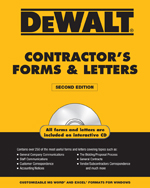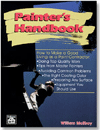
“Accidents will happen” are words that make me cringe. It’s a form of defeatism and I suspect that people who mutter those words are more accident-prone than most.
Construction is notorious as one of the most dangerous industries to work in, every year ranking near the top in occupational fatalities and injuries. So you hear a lot of “accidents will happen” verbal gas passing from people who didn’t do enough to prevent job site accidents.
Let’s get this straight. Risk is inherent to the construction industry, and there’s little you can do about that. Your workers have to contend with heights, confined spaces, hazardous materials, slippery surfaces, sharp edges, power tools, heavy equipment, electricity, adverse weather and various other dangers that could-but don’t necessarily have to-lead to injury.
While risks indeed “will happen,” that’s different than assuming accidents are inevitable. Eliminating or at least drastically reducing accidents is something over which every contractor has a great deal of control. In every trade you can find contractors who go years without lost-time injuries or worse. They are rewarded with insurance premiums and worker comp claims that are far below those of competitors. What do these companies do that others don’t to prevent accidents?
In a while I’ll answer that question in a little more detail but first it’s important to understand that safety is mostly a matter of attitude. Low-accident contractors take safety seriously and implement programs to assure that everyone in the company takes it seriously. I’d go so far as to say that any contractor that doesn’t initiate a safety program is a fool.
A moral obligation exists to do so, of course. Nobody should have to put up with pain and suffering in return for a paycheck.
But even if you’re not the bleeding heart type, you should be motivated by the amount of money at stake.
The insurance rates you pay for workers comp, often the most expensive coverage, is determined largely by your Expense Modification Ratio. EMR is an insurance industry number that determines your degree of risk compared with other firms in the same type of business. An EMR of 1.0 is the industry average. Anything below 1.0 is good, above it, worse than average.
For example, take a large job with a contract value of $50,000 and your labor costs are 30 percent of the bid, or $15,000. Now let’s assume an insurance exposure rate of $15 per every $100 of payroll, or 0.15. The insurance cost for that job, based on the formula, EMR x Payroll x Exposure Rate = Insurance Cost, would be as follows:
EMR of 0.8 = Insurance cost of $1,800
EMR 1.0 = $2,250
EMR 1.1 = $2,475
EMR 1.5 = $3,375
Keep in mind that the average job results in about 2 percent net profit, or $1,000 on a $50,000 project. As you can see, the difference between an expense modifier of 0.8 and one just slightly worse than average (1.1) is $675, which would wipe out two-thirds of the typical job profit. A dreadful EMR of 1.5 would likely result in a loss for the job in question.
The example breaks down, however, because someone with an EMR of 1.5 likely wouldn’t work on a large and lucrative project. Owners and GCs often exclude contractors with poor safety records from even bidding on the work. That’s because owners and GCs-who themselves are squeezed to the max and attempt to pass along their grief-have learned that safety pays in the long run. In fact, companies with an exceptionally high EMR may have trouble in many markets even finding insurers willing to take them on.
The insurance industry tends to calculate EMR based on claims going back as far as three years. This means that even though you may have had a great claims history for many years but suffered a couple of bad accidents during 2008, those claims will be reflected in your policies until you pass through 2011. Even momentary lapses can be costly.
Insurance and medical expenses are direct, measurable costs, but represent only the tip of the iceberg. Various studies have found that indirect costs are many times as great, ranging from seven to 20 times as much, according to one consultant. These get incurred via lost productivity, equipment down time, employee displacement, replacement training, training to prevent reoccurrence and other factors.
I said that safety begins with attitude, and that has to start at the top level of management. If the CEO or owner of a contracting firm isn’t willing to invest the resources to make safety a core value of the company, the result will be a slipshod effort at best. If you as the CEO or owner do believe this is important, then many insurance companies and trade associations have materials that give step-by-step instructions for implementing a comprehensive safety program in your company. They may vary in a few details, but here are some of the common elements likely to be included:
Put a superintendent, project manager, general foreman or some other high-ranking manager in charge of the safety program with instructions to be its champion. Get this person certified by OSHA as an outreach trainer able to teach 10- and 30-hour OSHA courses. Make safety performance part of this person’s discretionary compensation formula.
Make it a requirement that everyone in the company-office staff included-must take at least the 10-hour class. Why office staff? First, they, too, are subject to injuries such as carpal tunnel syndrome. Second, they sometimes visit job sites and are likely to be less aware of hazards than someone who encounters them day-by-day. Finally, they can serve as eyes and ears alerting others to safety hazards or violations.
Conduct regular training session, not just for orientation. Arrange for regular “toolbox” safety talks at job sites. Distribute safety bulletins with paychecks. Provide safety checklists to all relevant parties.
If you employ any workers who speak predominantly Spanish or another foreign language, make sure you have someone capable of translating all training and instruction materials. Statistics show that accident rates are many times higher for Hispanic workers than English speakers, mainly due to a lack of understanding of safety practices due to the language barrier.
Purchase all necessary safety equipment for field operations, train everyone in their use and insist upon their use by everyone on job sites. Establish penalties for violations beginning with write-ups and progressing to termination for serial violators.
Create an incentive program with monetary or gift rewards for achieving safety goals. For instance, I know of one company that holds a drawing for a large screen high-definition TV each accident-free month. All employees get their name in the hat.
Solicit input from all employees about how to improve job site safety. Take to heart this quotation from Wal-Mart founder Sam Walton: “The key to success is to get out into the store and listen to what the associates have to say. It’s terribly important for everyone to get involved. Our best ideas come from clerks and stock boys.” I’ve even heard of companies with a policy that allow any employee to stop operations at a construction site for safety reasons, even if the safety problem involves a different subcontractor. The head of the safety program is called upon to intervene and get the situation corrected.
If an employee does incur a lost-time accident, don’t automatically send the person home for the duration. Try assigning him/her to lighter duty if possible. This will help lower your EMR.
If all this sounds rather obsessive, well, that’s the point. A safety obsession is something to strive for rather than recoil against. Safety is real smart business. W&C




Report Abusive Comment